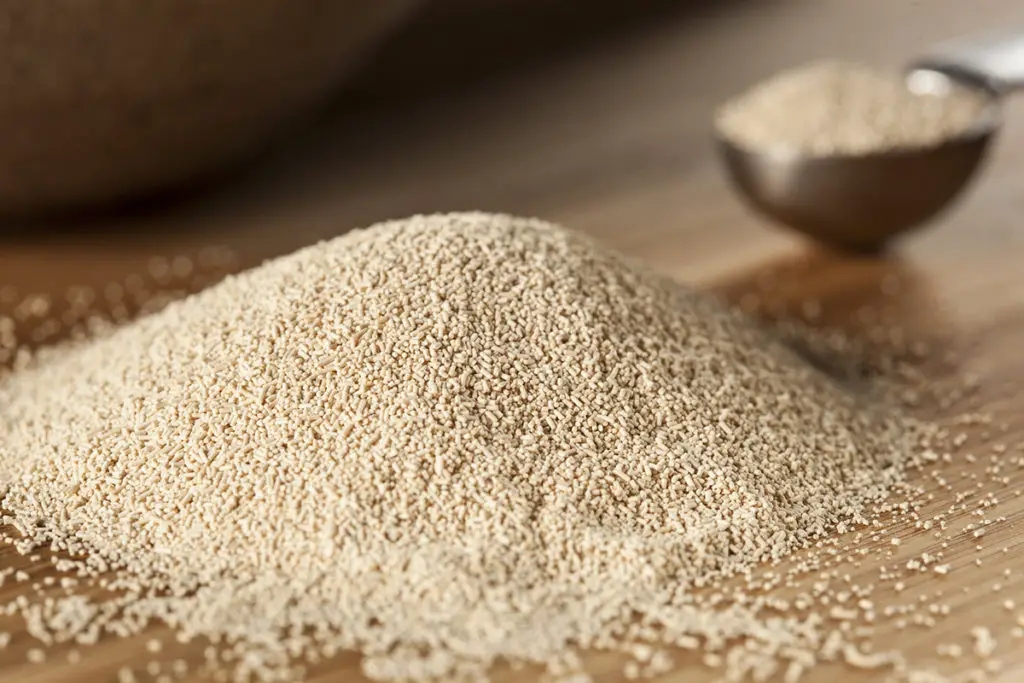Many people enjoy homebrewing as a hobby and prefer their own homemade wine and beer. As we all know, fermentation doesn’t happen without organisms called yeast, which grow during the fermentation process to give you the intended results. Yeast nutrient helps with the overall health of the brew, but do you know when the best time is to add it?
The best time to add yeast nutrients when homebrewing is 10-15 minutes before the boiling is over. But some brewers add it at the beginning or middle of fermentation to ensure sanitization. While most yeast nutrient producers state the ideal timing on the packaging, you can also do some trial and error.
In the rest of this article, we’ll tell you what yeast nutrient is, how it works, and when you should add it to gain the best results. We’ll also cover some common questions about yeast nutrient usage during homebrewing to help you have an amazingly tasty product.

Gold Medal Wine Club - Boutique, award-winning wines delivered monthly! → Choose Your Wines
BEER DROP: Boxes of beer from Award-winning microbreweries → Join The Club
What Is Yeast Nutrient?
Yeast nutrient is a kind of additive used in the brewing and winemaking process to ensure the health of the yeast and produce the best result. Yeast nutrient is a mixture of vitamins, amino acids, diammonium phosphate, and minerals that allows yeast to complete the fermentation.
It’s important not to mistake yeast nutrients with yeast energizers. Yeast nutrients don’t accelerate fermentation but improve the reproduction and growth of yeast. On the other hand, yeast energizers help with its energy requirements and may speed up the process.
Yeast nutrients are usually made of different compounds required for nourishing the yeast and helping it ferment the beer in the best way. While you should always read the labels, they’re commonly made of compounds like the following:
Diammonium Phosphate
Diammonium Phosphate (DAP) is the main ingredient in most yeast nutrients and plays a key role in yeast health. It’s also the simplest way to supplement nitrogen for most homebrewers.
It provides a good source of free amino nitrogen (FAN) for the yeast. However, since malt has a lot of FAN, this compound isn’t usually needed for beer production.
Yeast Hulls
No products found. (Amazon) or yeast ghosts are basically dead yeast cells that provide a lipids and fatty acids source, which are essential for providing the required resources for the production of new yeast cells. They also absorb toxic yeast by-products.
Vitamins and Minerals
Yeast organisms also need some types of vitamins for growth and reproduction. Vitamins like Thiamin and biotin are vital for enzyme functions, breaking down carbohydrates, and yeast growth.
Minerals like magnesium and zinc help yeast grow and increase its cell number. They’re also effective in yeast metabolism. Magnesium, in particular, plays a crucial role in catalytic reactions and protects yeast against environmental factors like high concentrations of ethanol.
Amino Acids
Amino acids are also essential for protein synthesis and reproduction. While yeasts can produce lots of their own amino acids, some vital ones should be absorbed from the wort. If the produced cells can’t get enough essential amino acids from the wort, the added yeast will provide the required amount.
How Yeast Nutrient Works

Yeasts need nutrients to successfully grow, reproduce themselves, and complete the fermentation process. Brewers’ wort is usually rich and almost contains whatever yeast needs for good fermentation.
Yeast requires nitrogen and amino acids to make proteins, sterols, and fatty acids to build cell walls and B-vitamins for metabolism. However, these nutrients aren’t usually added unless people are brewing very high gravity or high adjunct brews.
Each yeast strain, depending on its type, has its own tolerance for alcohol. If yeasts get too close to this threshold, they may develop problems and stall. Adding yeast nutrients to beers with about 8 percent or more alcohol can ensure yeast health.
If a large portion of the beer is adjuncts, especially the fermentable compounds that come from plain sugar, yeast nutrient should also be added. That’s because fermentable sugar provides no actual nutrient for the yeast. So, if 25 percent or more of the fermentable compounds are from adjuncts, yeast needs extra nutrients.
Plus, wine or mead-making needs yeast nutrients more than beer. That’s because malt is so rich in nutrients itself while fermentable compounds of wine or mead usually come from plain sugars. So, yeast needs the addition of nutrients to grow and thrive.
When To Use Yeast Nutrient in Homebrewing
The timing of yeast nutrient addition is subjective; some brewers use it at the beginning of the process to make sure of its sanitization and also provide the yeast with its required nutrients from the start.
Some others add the yeast nutrient through the boiling, in the middle of fermentation, or even 10 minutes left in the boil. Some more professional brewers add the yeast nutrient in 3 or 4 phases during the fermentation process. This way, yeast will receive its required nutrients at different stages during the process.
These phases are:
- 24 hours after pitching the yeast
- 48 hours after pitching the yeast
- 72 hours after pitching the yeast
- 7 days after pitching the yeast
The above staggered approach to adding nutrients is usually used for mead or winemaking.
How Much Yeast Nutrient You Should Add
The recommended dosage on the yeast nutrient package is the best source to tell you how much of the product you need. So, it’s wise to follow the manufacturer’s advice. In most cases, about 1 gram per liter or 1 tsp for 5 liters or 1 gallon is recommended.
However, if you don’t know the recommended dosage, the best way is trial and error. It’s okay if you go a little bit over or under the ideal amount.
But if you use too much yeast nutrient, the yeast won’t be able to use it up and remove it from the brew. So, you may end up with an off-tasting final product. On the other hand, using too little nutrient may lead to nutrient deprivation and weaken the yeast’s fermentation ability – although it’s less likely.
How To Use Yeast Nutrients in Homebrewing
Using yeast nutrients for feeding your yeast cells isn’t complicated. Pick a bowl large enough and pour some warm water into it. Then add your yeast nutrient to the water and let it dissolve completely. Now, add this solution to the wort at your intended time or phase.
It’s best to use distilled water to prevent changing the mineral balance of your product. The amount of water you need is three to five times the amount of nutrients you add. Note that foaming can happen immediately, so leave some headspace to avoid making a mess.
The Ideal Temperature To Add Yeast Nutrient
Temperature is a crucial factor for yeast’s proper function. Ideally, you should add the yeast nutrient during the fermentation phase when the temperature is approximately between 65 to 67°F (18-19°C). At this temperature, your yeast can thrive best and use up the nutrients you’ve provided.
Adding Yeast Nutrient During Secondary Fermentation – Yes or No?
You shouldn’t add any more yeast nutrients during the secondary fermentation. By that time, a considerable portion of the fermentation process is over, and there’s enough yeast and nutrition for the process to finish. Adding extra yeast nutrients can make your final product taste funny.
What’s more, adding yeast nutrients during secondary fermentation can be dangerous. That’s because the fermentation process continues even after bottling, which can result in a buildup of pressure and ultimately an eruption.
Conclusion
Yeast plays a key role in brewing, but it’s a living organism that needs nutrients for metabolism and growth. The addition of yeast nutrients ensure that the yeast is fed enough to thrive throughout the entire fermentation process.
While many brewing experts advise adding the nutrients 10 minutes left in boiling, some add it early to sanitize them. Some others add the nutrient in setpoints during fermentation to make sure yeast is appropriately nourished to give them the best results.
